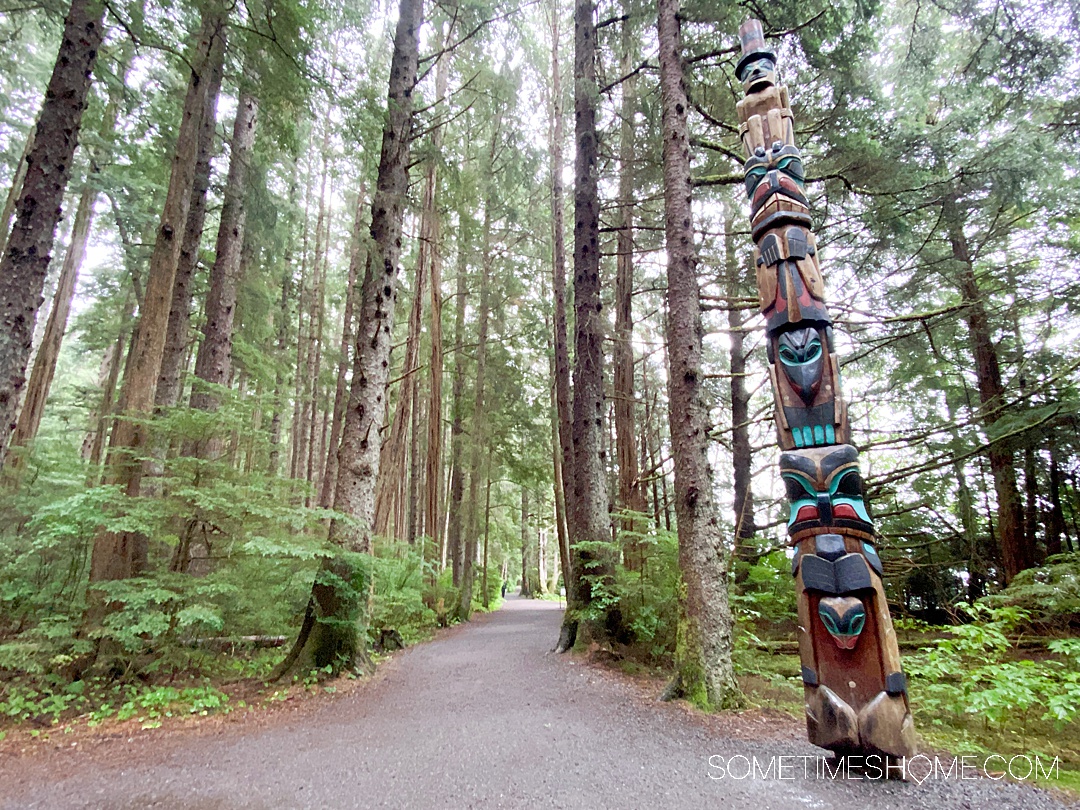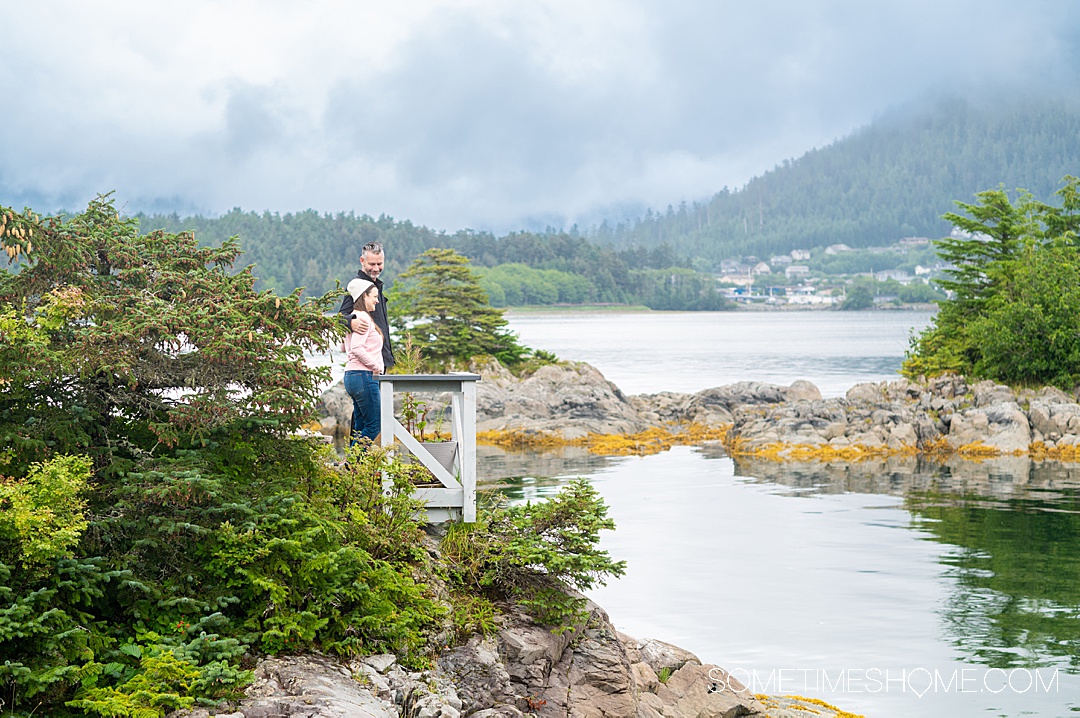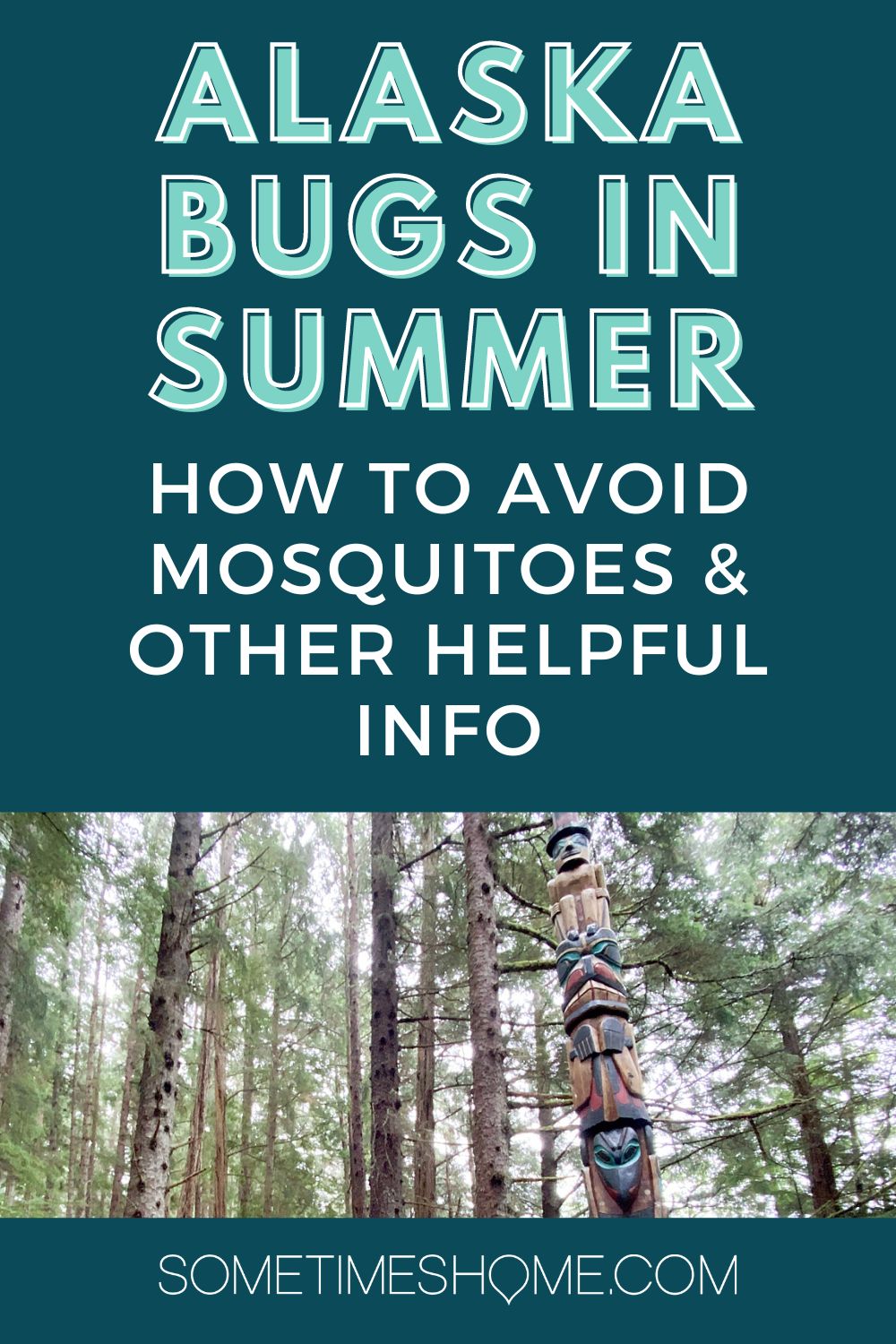Alaska Bugs in Summer: Avoiding Mosquitoes & What to Know
Welcome to the wild and natural beauty of Alaska, where the scenery is breathtaking, and the tales of Alaska bugs in summer have become part of local lore.
People certainly enjoy swapping stories about the legendary mosquitoes that can carry you away if you're not careful. Some say they're so big they’ve got landing lights, and others swear they've seen mosquitoes wearing fur coats to brave the cold.

The good news is, after having been to Alaska during summer, we can say that the mosquitoes weren’t bad. However, Alaska’s got its fair share of no-see-ums (blood-sucking insects called Ceratopogonidaes) and biting flies that can give even the toughest humans a run for their money.
Disclosure: We may make a small commission from affiliate links in this post, but all opinions are ours. We bring you content with genuine facts, photos, thoughts, and recommendations. Always. As Amazon Associates, we earn from qualifying purchases. This helps keep our content free and accessible to our readers.

How Bad Are the Mosquitoes in Alaska?
We have heard some people joke that a mosquito is the Alaska state bird. While that might be hyperbole, the reality of the bugs in Alaska summer situation may not be far from the truth depending on the year and how climate change is affecting things.
Though summer is the best season for touring this elusive state’s natural landscapes, it’s also, unfortunately, the time mosquitoes are at their peak.
Summer’s extended daylight hours give mosquitos the warmer temperatures needed to breed, combined with Alaska’s abundance of water bodies, which also create ideal breeding conditions. The result? Determined mosquito swarms need to survive, which could result in dozens of bites for you.
Did you know: female mosquitoes are the ones that bite! Adult mosquitoes need the blood to produce eggs.
But we visited Alaska at the beginning of August and only got one mosquito bite during the two weeks we were there. This led us to understand that other environmental factors besides seasonality may contribute to why some years are worse than others for mosquitoes.
Regardless, if you're planning on exploring the Last Frontier, which will likely be during its tourist season during the summer, be sure to pack a Bug Bite Thing, some mosquito repellant, and a sense of humor – you might need all three! Read on for other helpful info and recommendations for what to pack to avoid these pests.
Time When Alaska Mosquitoes Are the Worst
You’re likely wondering, “When is mosquito season in Alaska?” Locals have a funny way of referring to seasons. There’s winter, June, July, and August. We bet you can guess when mosquito season is!
Typically, mosquitos breed in early June, so you can expect these pesky insects to be prevalent from the second week of the month during the beginning of summer until late July. In bad seasons, they will stick around a bit longer.
Locations and Cities in Alaska Where Mosquitos are the Biggest Problem
It’s reported that while urban centers, especially along the coast, won’t experience swarms of mosquitoes, Northern Alaska is a place to avoid if you want to avoid mosquitoes. The reason for this is weather-related.
The northern part of Alaska is bound to have more stagnant water from rainfall or snowmelt. Other areas to avoid would be bogs, marshes, or heavily forested areas such as in the Central Interior of the mainland.
While Denali National Park is considered inland Alaska, the area where the majority of cruise tourists go is to the Inside Passage, just west of Canada’s province of British Columbia. That is where Vancouver is and is also near Seattle, Washington.
Tips for Avoiding Mosquitos in Alaska
If you’re at home and want to ward off mosquitos, you may just light some citronella candles. But when you’re traveling in Alaska, it’s not as easy to do that and call it a day.
If you don’t want to spend your time and energy swatting away mosquitos or scratching mosquito bites, follow these simple steps. They will lessen the opportunity mosquitoes have to get to you.
✔️ Avoid Stagnant Water
Avoid staying near stagnant water, interior forests, or moist tundras. Mosquitoes love moisture and lay their eggs in water bodies such as puddles and ponds.
✔️ Enjoy the Sunshine
Stay out of the shade and in sunnier areas. These pesky insects like dark, damp areas; staying in direct sunlight where possible will help avoid them.
✔️ Look for Breezy Areas
One of the best defenses against bugs in Alaska doesn’t require doing anything but being mindful of where you’re visiting: travel to areas with a breeze.
Even a light breeze is enough to ward off hoards of tiny winged creatures. Visiting areas in Alaska’s coastal towns will assist with this, including destinations like Sitka, Ketchikan, Anchorage, Kenai Peninsula, Juneau, and Skagway.
We stayed at Twin Islands Retreat in Sitka, Alaska, and we didn't get any bug bites there. This was partially thanks to a light breeze that blew across the island most days and a bigger breeze other times at the resort.

✔️ Combine Wilderness Sightseeing with Indoor Attractions
Avoiding the wilderness altogether in Alaska is nearly impossible to do; seeing its natural beauty is likely the reason you’re there. But you can combine outdoor adventure with some indoor attractions if the bugs are really bad, including great museums.
We loved the Alaska State Museum in Juneau, which is state-of-the-art and packed with tons of great info and exhibits, including some about Alaska’s history and native people.
✔️ Don’t Wear Tight Clothes
It’s a good idea to wear loose clothing, long sleeves, and pants that cover your extremities. This will make it harder for mosquitoes to bite you. Avoid tight athletic gear or athleisure, like leggings, for this reason.
✔️ Be Mindful of Bodily Odors
Don’t smell too good or too bad. It is also worth noting that mosquitoes tend to be attracted to good-smelling things rather than foul smells. Scented soaps and shampoos are mosquito magnets, so it’s best to avoid them. Instead, look for unscented versions of these products! Consider skipping perfume, cologne, or scented lotions.
✔️ Buy Specialty Clothing
If you’re deeply concerned about the bugs, consider buying protective clothing like a bug net shirt to wear in Alaska.
Bug net shirts are a real thing! (Who knew?) And wearing one of these garments with fabric netting will help to protect your head, neck, and face from bugs landing on your skin.
✔️ Use Bug Repellents
This tip may be a bit obvious, yet it’s oh-so-necessary to mention. Be ready, locked, and loaded with your choice of repellant, whether a spray or essential oil. We suggest some products to pack for this very reason below.
✔️ Carry a Handheld Mosquito Bug Zapper
Carry a mosquito-zapping gadget with you. These are excellent if you plan to stay in the wilderness or in a particular location for some time, like a campsite. Thermacell offers numerous options depending on group size, including a small tabletop rechargeable repeller. They even have a portable handheld mosquito-repelling gadget.
There are a number of portable bug-zapping gadgets of various sizes to choose from on Amazon.
What to Pack for Your Trip to Alaska to Repel Mosquitos
Appropriate Clothing
Packing lightweight, breathable, long-sleeved shirts and long pants is vital as they can act as an extra physical barrier against dreadful bites.
Though it’s warm some days in Alaska during summer, it’s in the 50s or 60s other days. It’s colder than hot summer days during spring and fall as well, so you might be glad to have on long sleeves for multiple reasons.
To protect your face and neck, think about packing a mosquito net for your head and a hat with a broad brim.
For even more protection, think about taking clothes that have been treated with permethrin, an insect repellent that is sprayed on some textiles. When camping or sleeping outside, don't forget to pack a well-reviewed mosquito tent or netting to create a bug-free haven.
The Bug Bite Thing
Our favorite tool to get the itch out of your skin after a bug bites you is the low-cost Bug Bite Thing gadget. It’s a non-invasive, painless venom-removing suction tool that works well for us. We have several and pack them in our luggage and day bags.
They truly help make a trip more enjoyable by removing irritating, constant skin itching from bug bites. Additionally, they solve the problem by eliminating the venom causing the itch rather than using something like an itch-relief cream that only provides temporary relief.
Must-have item for your Alaska vacation:
The only thing we have tried that gets rid of bug bites from your skin is The Bug Bite Thing. This item is a MUST pack when we travel. We always pack one in our backpack/day bag and another in our luggage. Don't travel without it! And yes, it really works!

Bug Repellant
Let’s take a look at some bug sprays to repel these insects, so you can fully enjoy your Alaskan vacation.
DEET Based Repellents
Using a mosquito repellent that contains DEET as its active ingredient is one practical way to guard against these annoying insects. Even though DEET is known to be the most effective chemical mosquito repellent, it's vital to know it has potential health risks. It has been linked to environmental problems and is possibly carcinogenic.
Many repellents have 20–30% DEET content; however, in mosquito-borne areas, 95% DEET can offer total protection. Maybe it’s not the healthiest option, but I’ve definitely used bug spray on my body with a 90%+ DEET content, like when we went to Belize. (Bugs love biting me.)
Tip: It is not recommended to use high DEET concentrations on small children.
DEET is a strong chemical that should be sparingly applied directly to the skin, avoiding any open wounds. The best way to apply it is to spray it on your clothing.
Tip: Keep DEET away from certain plastics as it’s known to deteriorate them.

Picaridin Mosquito Repellent
Unlike DEET, picaridin does not pose the same toxicity risks and is generally considered slightly more effective than DEET. It’s odorless, won’t deteriorate your clothing or things made of plastic, and is nongreasy. As a bonus, it also protects against ticks.
Permethrin Repellent
Instead of acting as a repellent, permethrin acts like an insecticide. It incapacitates or kills mosquitoes once they land on you. This is in contrast to DEET or picaridin, which repels mosquitoes, discouraging them from coming near you.
Permethrin is a multipurpose solution that works well on skin and clothes.
Citriodiol ®
Travelers have found Citriodiol®, a lesser-known insect repellent, to be beneficial. Its biodegradability makes it an environmentally friendly option.
Citriodiol® is thought to be either as effective as or more effective than synthetic equivalents. It is made exclusively from Eucalyptus citriodora oil and is produced using an ecologically friendly approach.
Wristbands and Keychains
We have bug-repelling wristbands we travel with as needed that are free of harsh chemicals. There is a pouch on each wristband where a replaceable pellet goes. The pellet is made of seven essential oils, including citronella and peppermint oil. They are paraben-free and DEET-free.
If you prefer to hang a keychain off your backpack for the same purpose, Para Kito offers both options, wristbands and keychains.



